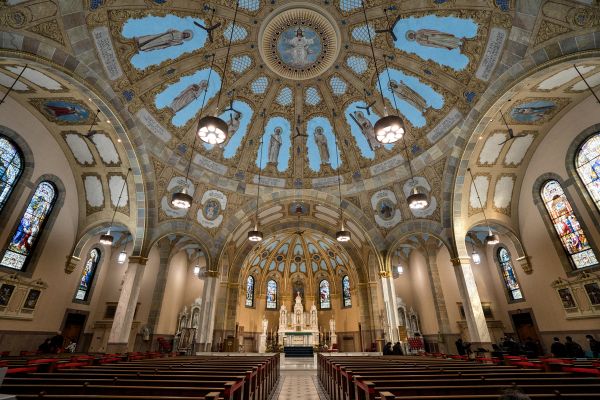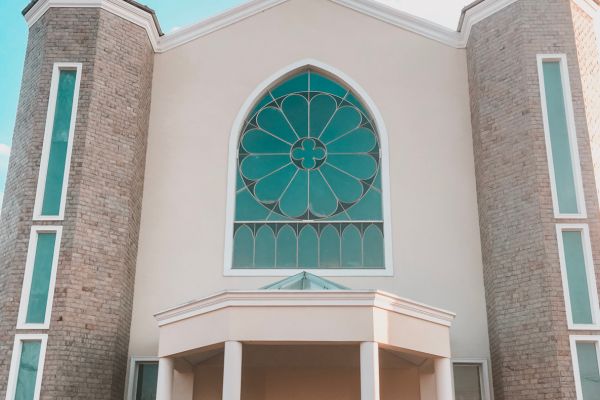When churches seek to expand their physical infrastructure, improve their facilities, or launch new ministries, funding often becomes a major hurdle. A loan from a bank or financial institution can be a viable solution to secure the necessary funds. However, the application’s success largely depends on how well the loan application letter is crafted. This article provides a comprehensive guide on how to write a church loan application letter, ensuring it is professional and persuasive.
Church Loan Application Letter
A church loan application letter is an essential document for requesting financial assistance. It should effectively communicate the church’s mission, the need for funds, and the church’s plan for repayment. The tone of the letter should be formal but personable, and it should reflect the church’s values. In this guide, we will explore how to write a church loan application letter that resonates with lenders. By following these steps, you can improve your chances of securing a loan for your church.
Understanding the Purpose of a Church Loan Application Letter
The primary purpose of a church loan application letter is to formally request financial assistance from a bank or lender. It should clearly articulate the church’s need for the loan, explain how the funds will be used, and outline how the church intends to repay the loan.
Key Points to Include:
- Church Details: Name, location, and a brief history of the church.
- Purpose of the Loan: Why the funds are needed (e.g., church building expansion, renovation, or community projects).
- Financial Overview: A summary of the church’s financial standing, including revenue sources and any previous loans.
- Repayment Plan: Assurance of the church’s ability to repay the loan.
Structuring Your Church Loan Application Letter
The structure of your church loan application letter should be clear and organized. A well-structured letter makes it easier for the lender to assess the church’s financial needs and repayment ability. The typical structure includes:
A. Introduction:
The introduction should state the church’s intent to apply for a loan and provide a brief overview of the church’s purpose.
Example:
“Dear [Bank/Lender’s Name],
On behalf of [Church Name], we would like to formally request a loan of [Amount] to support [specific project or need]. Our church, established in [Year], has been actively serving the community through various spiritual, educational, and charitable programs.”
B. Description of the Church:
This section should provide more details about the church, its mission, and its community role.
Example:
“Our church is located in [City/State], and over the years, we have grown from a small congregation to over [Number] members. Our mission is to spread the teachings of Christ, support local families in need, and promote community development.”
C. Purpose of the Loan:
Explain clearly why the church is seeking the loan and what it intends to do with the funds.
Example:
“We are currently seeking financial assistance to [expand our worship space, renovate the existing building, or launch a new ministry program]. This project is critical to meet the needs of our growing congregation and continue to serve our community effectively.”
D. Church Financial Status:
Provide a transparent financial overview, including current revenue, donations, and any previous loans.
Example:
“Our church generates revenue through weekly offerings, donations, and special events. Last year, our total income was [Amount]. We have successfully managed our finances and have no outstanding loans.”
E. Repayment Plan:
Assure the lender of the church’s capability to repay the loan.
Example:
“We are confident in our ability to repay the loan through our consistent revenue streams and additional fundraising efforts. We propose a repayment plan of [insert timeline and terms], which will allow us to meet the financial obligations promptly.”
F. Conclusion:
End with a polite request for consideration and express willingness to provide additional documentation or information.
Example:
“We sincerely hope that [Bank Name] will consider our loan request. We are happy to provide any further documentation or details you may require. Thank you for your time and consideration.”
Key Components of a Persuasive Loan Application
Writing a persuasive loan application letter requires balancing professionalism with a human touch. The letter should focus on the church’s positive impact on the community, its financial responsibility, and its commitment to repaying the loan.
A. Highlighting Community Impact:
Lenders are more likely to approve loans if they understand the positive impact the church has on its community. Mention specific programs, outreach efforts, or partnerships that demonstrate the church’s value.
Example:
“Our church plays a pivotal role in our community. We host weekly food drives, provide shelter for homeless families, and offer free counseling services. This loan will enable us to continue and expand these critical programs.”
B. Demonstrating Financial Responsibility:
Lenders need assurance that the church is financially responsible. Including past successes in managing funds and fulfilling previous financial obligations will help.
Example:
“We have successfully managed past financial obligations and are currently debt-free. Our financial committee oversees all church expenses to ensure proper allocation of resources.”
C. Tailoring the Letter to the Lender:
Research the lender’s requirements and preferences. Tailoring the letter to the lender shows that the church has put thought into the request and is serious about the partnership.
Example:
“Based on [Bank Name]’s history of supporting faith-based organizations, we believe that our mission aligns with your values. We have chosen to apply through your institution because of your reputation for supporting community projects.”
Avoiding Common Mistakes in Church Loan Application Letters
When writing a church loan application letter, it’s easy to make some common mistakes that could reduce your chances of approval. Here are a few to watch out for:
- Lack of Clear Purpose: The lender needs to know exactly why you’re requesting the loan. Be specific about the project or need.
- Overlooking Financial Details: Don’t omit the church’s financial status. Transparency is key.
- Vague Repayment Plan: A clear and realistic repayment plan is crucial.
- Ignoring Lender Requirements: Always customize your letter to fit the lender’s application guidelines and expectations.
Customizing the Letter for Different Loan Types
Different types of loans (such as building loans, renovation loans, or operational loans) may require slightly different approaches in your letter. Ensure that the tone and content match the purpose of the loan.
A. Building Loans:
Focus on long-term growth and sustainability.
Example:
“We are requesting a building loan to construct a new sanctuary that will accommodate our growing congregation and enhance our ability to serve the community.”
B. Renovation Loans:
Emphasize immediate needs and how the renovations will improve the church’s services.
Example:
“This renovation is essential for ensuring the safety and comfort of our members and for expanding our programs.”
C. Operational Loans:
Highlight how the loan will support day-to-day functions and critical activities.
Example:
“With this operational loan, we will be able to continue our day-to-day functions, ensuring that our ministries and community outreach efforts remain uninterrupted.”
Supporting Documents to Include with the Application
A well-written loan application letter should be accompanied by supporting documents to strengthen the case. Some important documents include:
- Financial Statements: These provide a detailed overview of the church’s financial status.
- Project Proposals: Include detailed plans and cost estimates for the project that requires funding.
- Repayment Plan: Provide a more in-depth look at how the church will repay the loan.
- References: Letters of support from community members or church leaders can further demonstrate the church’s credibility.
Conclusion
Writing an effective church loan application letter requires careful planning and attention to detail. By clearly outlining the purpose of the loan, providing a transparent view of the church’s finances, and demonstrating a solid repayment plan, you increase your chances of securing the necessary funds. Make sure to personalize the letter based on the lender’s preferences and include any supporting documents to reinforce your request.
Remember, a well-crafted church loan application letter is not just a formal requirement—it’s a reflection of the church’s vision, financial integrity, and commitment to its community. By taking the time to write a persuasive and clear letter, your church will be well-positioned to secure the funding needed for its growth and mission.






